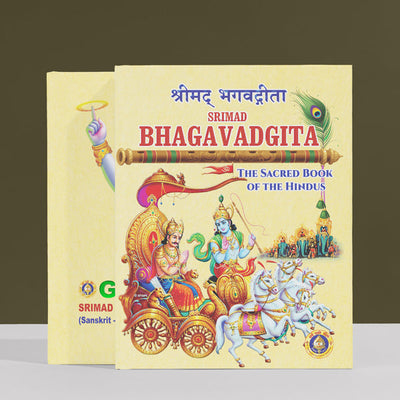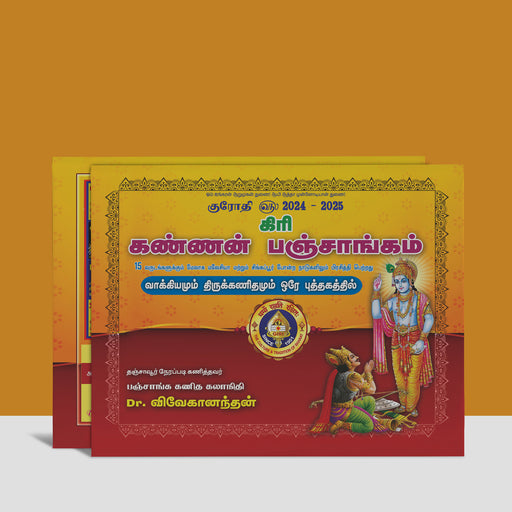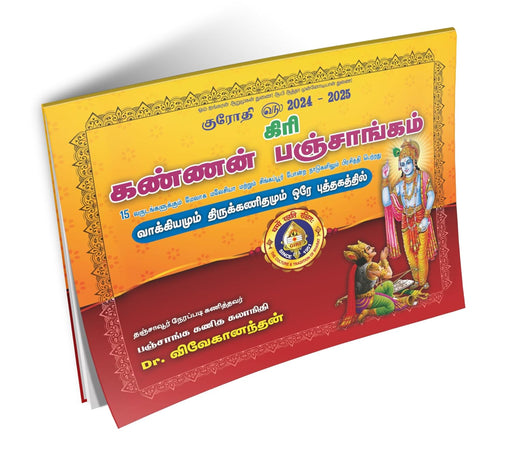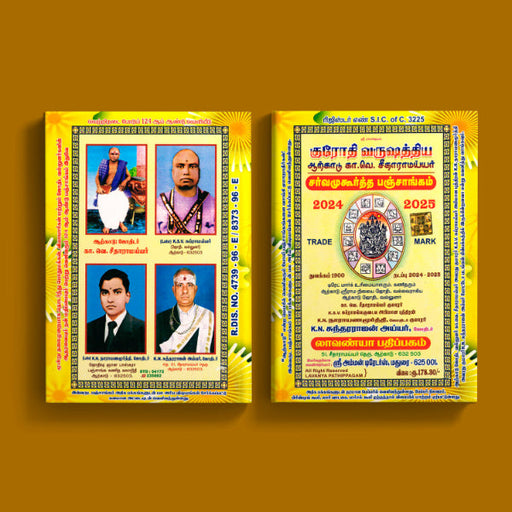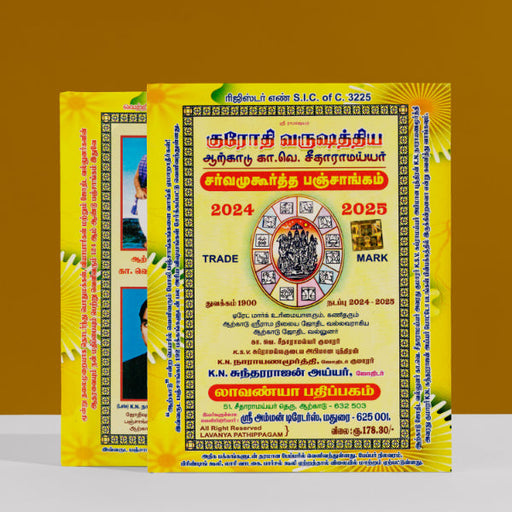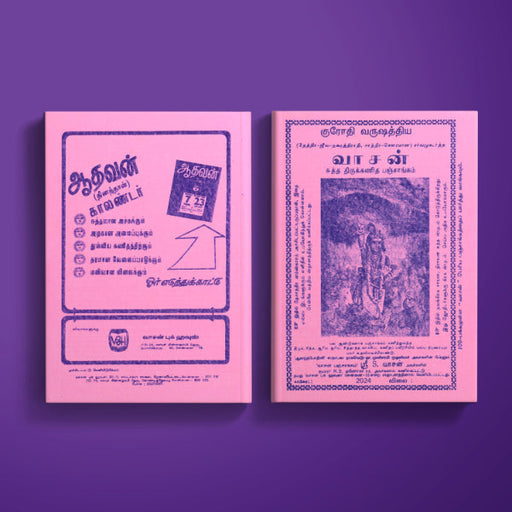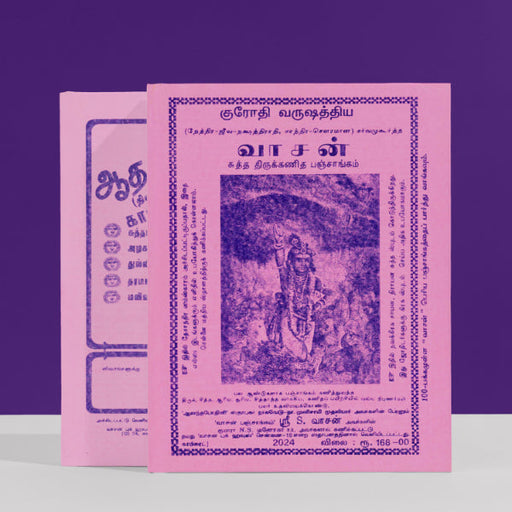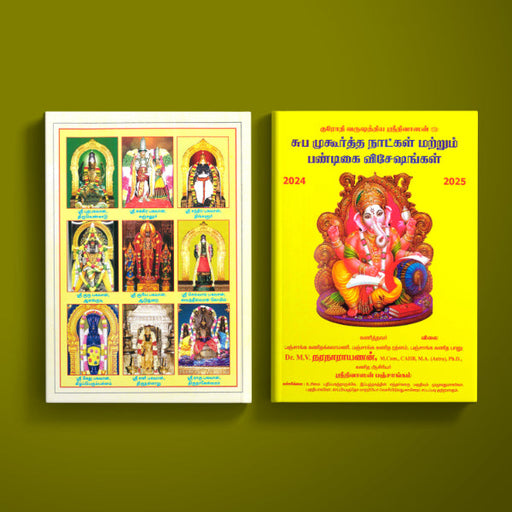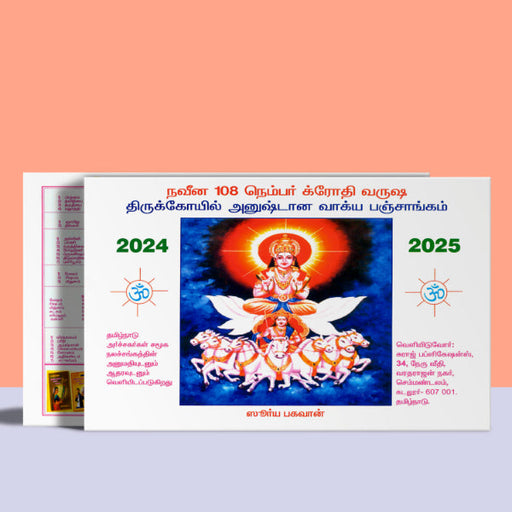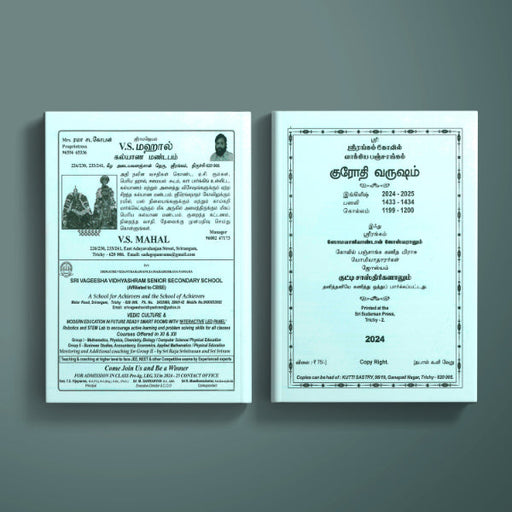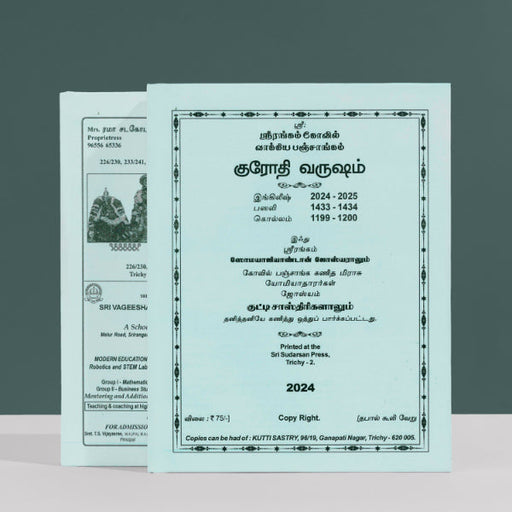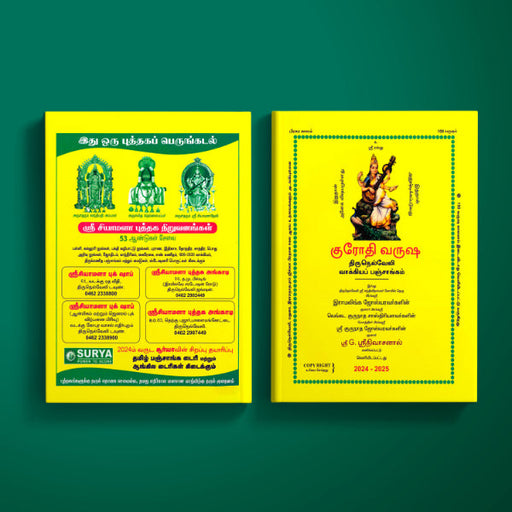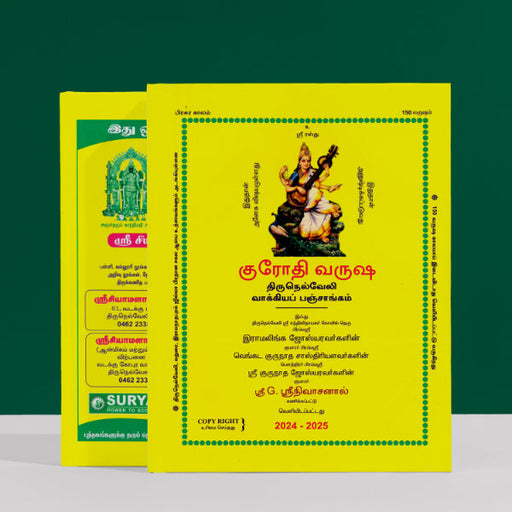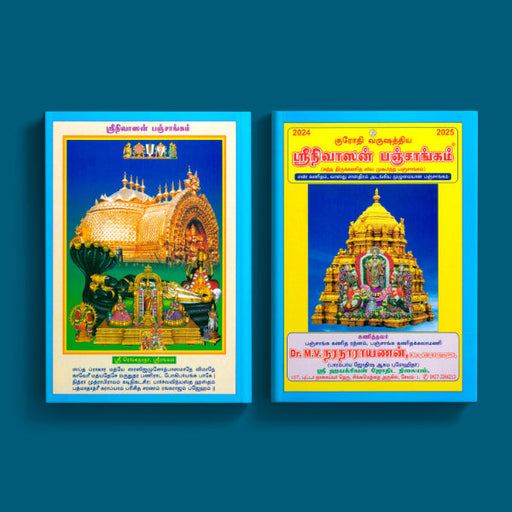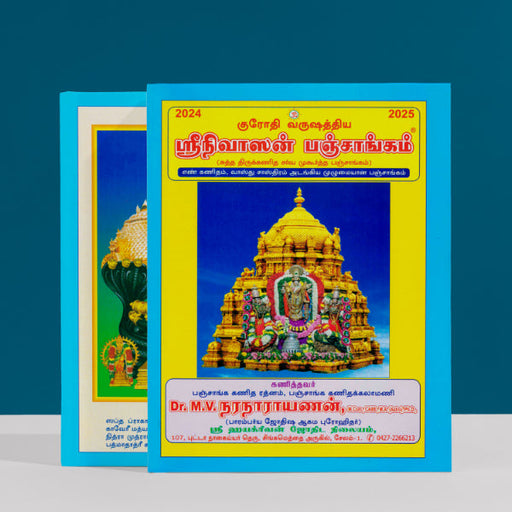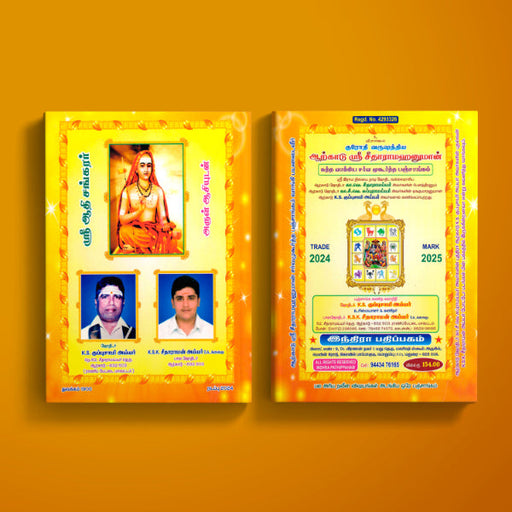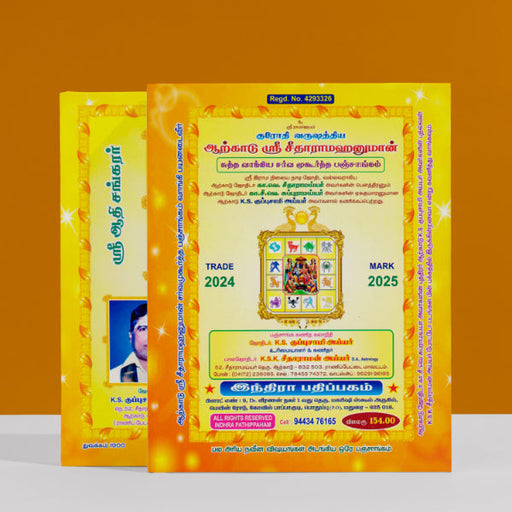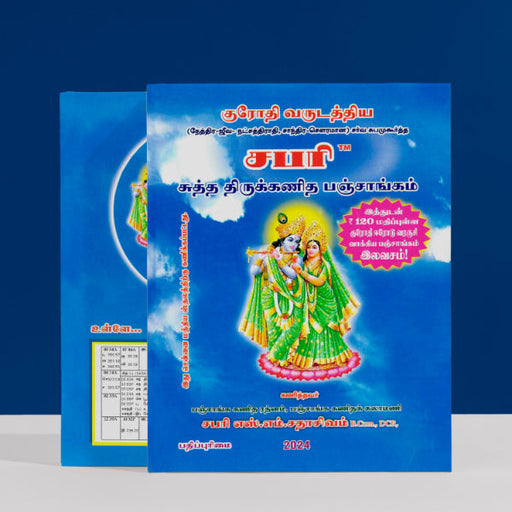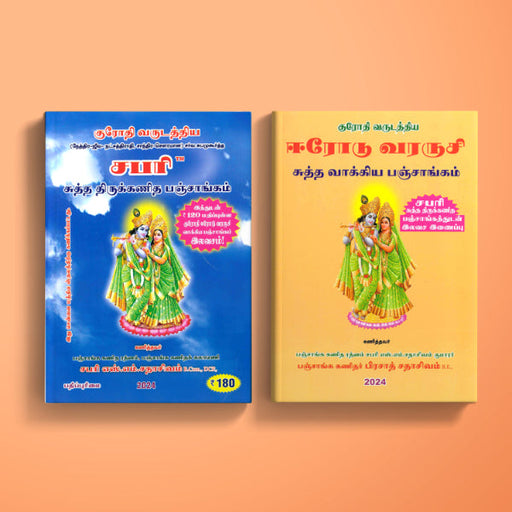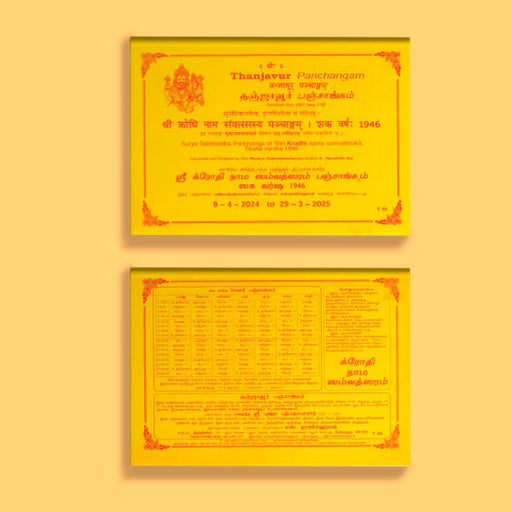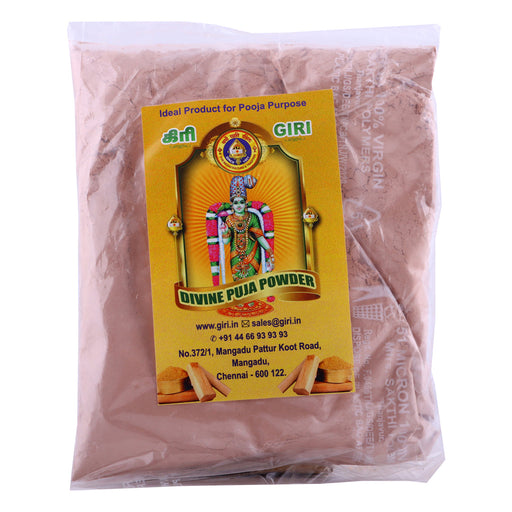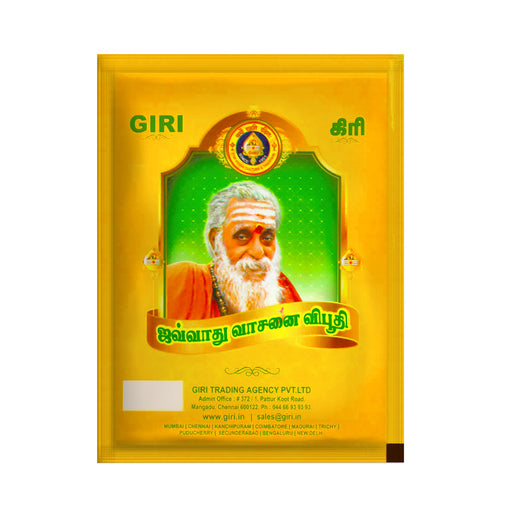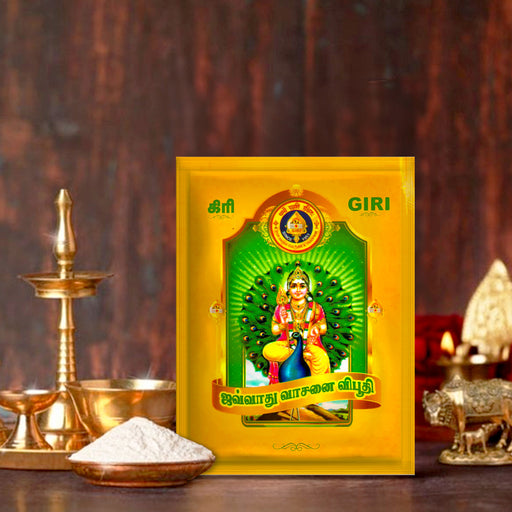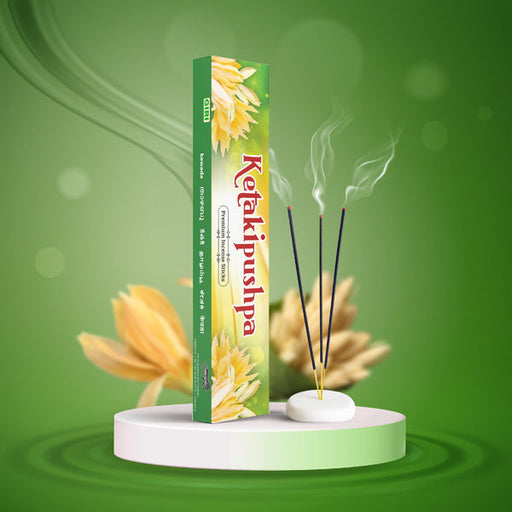
Tamil New Year 2024
Tamil New Year 2024: Significance, Important Dates & Rituals
Tamil Puthandu's history begins with the Chola dynasty, which ruled over Tamil Nadu and other regions of South India from the ninth to the thirteenth centuries. The Tamil calendar was developed during this period, and the first day of Chithirai was declared the Tamil New Year. The Sangam period book Netunalvatai has the first written mention of the celebration. The literature states that the sun begins its voyage on Chithirai (April/May) and passes through eleven signs of the zodiac. In Tolkappiyam, an archaic grammar still in use today, the month of Chithirai marks the start of summer. Numerous epics also highlight this month's significance. This celebration was associated with Vaishnavites (those who worship Lord Vishnu) in the eleventh century.
Other Indian States sharing the occasion
Puthandu celebrations mark the beginning of Chithirai, the first month in the Tamil solar calendar. In Tamil Nadu and Sri Lanka, people celebrate this day as a public holiday. This day is also observed as New Year's in several Indian states. On this day, people celebrate Pohela Boishakh in West Bengal, Vishu in Kerala, Baisakhi in Punjab, and Bihu in Assam.
In addition to the above mentioned Indian states, Manipur, Tripura, Bihar, Odisha, Punjab, Uttar Pradesh, Uttarakhand, Himachal Pradesh, Haryana, and Rajasthan also celebrate the New Year with great zeal, jubilation, and festivity.
Religious importance
It is thought that on this auspicious day, Brahma started the creation of the universe and Indra arrived on Earth to maintain harmony and peace. On this joyous occasion, people hope for riches and good fortune, which inspires them to launch new businesses.
"Punya: pushpitha kaanana, Chaitra: shreeman ayam maasa," says Valmiki in the Ramayana. The meaning is as follows. “Chittirai is compared to Lord Narayana by the Guru. Chittirai amid the months is the Primordial One, just as Narayana is. Just like Perumal is always happy to bestow his blessings onto his believers, Chittirai too showers people with delicate, lovely flowers. According to Valmiki, the trees are adorned with the splendor of fully blooming blossoms, which is reminiscent of the crown that sits atop Narayana's head.”
Chittirai serves as a reminder for us to put all of our faith in Narayana and to take on new endeavors with vigor. Even while working hard pays off, it's also necessary to keep God in mind and live according to the holy texts, which places a premium on prayer. It is known that Rama was born and crowned in the month of Chittirai.
Additionally, thousands of devotees flock to Madurai for the Kallazhagar Temple Utsav during this month. The Meenakshi Amman Kovil in Madurai is the epicenter of festivities. There is a major exhibition on this day. The 14-day celebration of this event begins with Kodi Yetram. This is Meenakshi Amman and Sundaresar's celestial marriage ceremony.
This year, the Thirukalyanam is on April 21, the Chitirai Thiruvizha starts on April 12, and 'Sri Kallazhagar Vaigai Aatril Ezhuntharulal' is on April 23. A renowned sight in Madurai, Chitirai Thiruvizha is a visual feast and a gathering place for Shaivites and Vaishnavites.
The 60 year cycle
The Tamil Panchangam, or calendar system, is a complicated and multidimensional timekeeping system that takes into account both solar and lunar movements. The calendar has a 60-year cycle made up of five cycles of 12 years each, and it is based on the positions of the sun and moon with respect to the earth.
The 60-year cycle, which is based on Surya Siddhanta's description of the 60-year circle of stars or the five revolutions of Jupiter, is very old and is observed by the majority of traditional calendars in China and India.
Five revolutions of Jupiter and two revolutions of Saturn account for the 60-year cycle. After sixty years, the relative positions of Jupiter and Saturn in a given year will be repeated. The primary purpose of the 60-year cycle was to forecast the climate of a given year because the two biggest planets, Jupiter and Saturn, are known to have an impact on climate.
Astrological significance coinciding with spring equinox
The sun's location, which lies halfway between the southern and northern hemispheres of the globe, determines the day. When the Sun enters Aries in late March, during the spring equinox, the Astrological New Year begins. This denotes a period of new beginnings and opportunities.
As the first sign of the zodiac, Aries represents the beginning of a new cycle that offers opportunities and renewed vitality to all. It's a fantastic moment to consider your objectives, make changes to your path and focus on improving yourself.
This time frame represents more than just the Sun's location; it also represents the rebirth of universal forces and the realization of personal potential. It's like an opportunity for both external and internal development that coincides with the waking of nature in the spring. The Sun enters Aries each year, igniting fresh opportunities and chances for personal development in all spheres of life.
Festive period
In order to have a great year, everyone's main responsibility is to seek the blessings of family elders, spiritual gurus, and family deities, even though exterior considerations like donning new clothes are a marketing push.
Tamil New Year celebrations are seen as more significant in rural areas of Tamil Nadu than famous holidays like Diwali. Cleaning the house and shopping for new clothes and household items are the first steps in the pre-festive preparations, which represent rebirth and prosperity for the upcoming year. In addition, they gather the fruits, vegetables, and other materials needed to prepare the New Year's feast.
They schedule the reading of the almanac, a ritual known as ‘Panchanga Shravanam’, which offers forecasts and direction for the upcoming year, on the day of the New Year. Because it helps with the planning of key events and activities, this occurrence is auspicious and noteworthy.
On New Year’s Day, people exchange greetings with extended families and friends apart from visiting temples. The sumptuous feast featuring an array of traditional Tamil dishes, takes the centrestage of the festivities where families come together to enjoy both the feast and the function.
Rituals and traditions associated with Tamil New Year
Kolam is specifically associated with Tamil Nadu and holds a special place in Tamil New Year rituals. Any synthetic additions are avoided and women use rice powder to draw kolams so that ants and insects could feed on them. They are seen as a way to welcome prosperity, good luck, and Goddess Lakshmi (the goddess of wealth) into the house for the coming year. Also, the act of drawing a fresh kolam in the morning symbolizes leaving behind negativity and creating a clean slate for the new year.
The doorways are adorned with a string of mango leaves. Mango leaves are considered auspicious in Hinduism, believed to bring prosperity and ward off negativity. They are strung together to create a beautiful and welcoming entryway for the Tamil New Year.
Temple visits
People throng temples on Tamil New Year and in Chennai, ancient temples like Kapaleeswarar Temple, Parthasarathy Temple, Vadapalani Lord Muruga Temple and TTD Balaji Temples, both in T Nagar, Chennai and at Tirupati, have queues running to kilometers. In Tamil Nadu, the Hanuman temple at Namakkal and Pillayarpatti temples are those among the much sought after shrines on this special occasion.
Conclusion
On a concluding note, Tamil New Year in the current times has the younger generation’s influence and has incorporated theater visits and festive routines like sitting in front of the television to watch special programs like Pattimandram in the festivities. The Tamil New Year is slowly becoming a holiday rather than a holy day in the recent past and the previous generation is witnessing it with a dry smile.

-
Kannan Panchangam 2024 - 2025 - Tamil | by Vivekanandhan/ Krothi Varudam Panchangam Book/ Astrology Book
Original price Rs. 120.00 - Original price Rs. 120.00Original priceRs. 120.00Rs. 120.00 - Rs. 120.00Current price Rs. 120.001. Introducing the Giri kannan Panchangam Paperback, a comprehensive astrological almanac that serves as your indispensable guide to celestial even...
View full detailsOriginal price Rs. 120.00 - Original price Rs. 120.00Original priceRs. 120.00Rs. 120.00 - Rs. 120.00Current price Rs. 120.00 -
Pambu Panchangam 2024 - 2025 - Tamil | Krothi Varudam Panchangam Book/ Astrology Book/ Horoscope Book
Original price Rs. 77.00 - Original price Rs. 77.00Original priceRs. 77.00Rs. 77.00 - Rs. 77.00Current price Rs. 77.00The Pambu Panchangam is a popular Tamil calendar published by Manonmani Vilasam Press in Chennai since 1883. It is known for its accuracy in astron...
View full detailsOriginal price Rs. 77.00 - Original price Rs. 77.00Original priceRs. 77.00Rs. 77.00 - Rs. 77.00Current price Rs. 77.00 -
Lavanya Panchangam 2024 - 2025 - Tamil | Krothi Varudam Panchangam Book/ Astrology Book/ Horoscope Book
Original price Rs. 178.00 - Original price Rs. 178.00Original priceRs. 178.00Rs. 178.00 - Rs. 178.00Current price Rs. 178.00• Lavanya Panchangam is your perfect companion, a soft-bound laminated Hindu calendar and almanac meticulously designed to keep you aligned with tr...
View full detailsOriginal price Rs. 178.00 - Original price Rs. 178.00Original priceRs. 178.00Rs. 178.00 - Rs. 178.00Current price Rs. 178.00 -
Vasan Panchangam 2024 - 2025 - Tamil | Krothi Varudam Panchangam Book/ Astrology Book
Original price Rs. 168.00 - Original price Rs. 168.00Original priceRs. 168.00Rs. 168.00 - Rs. 168.00Current price Rs. 168.00• Vasan Panchangam is your perfect companion, a soft-bound laminated Tamil Hindu calendar and almanac meticulously designed to keep you aligned wit...
View full detailsOriginal price Rs. 168.00 - Original price Rs. 168.00Original priceRs. 168.00Rs. 168.00 - Rs. 168.00Current price Rs. 168.00Sold out -
Subha Muhurtha Naatkal Matrum Pandigai Vishesha Natkal 2024 - 2025 - Tamil | Krothi Varudam Panchangam Book
Original price Rs. 60.00 - Original price Rs. 60.00Original priceRs. 60.00Rs. 60.00 - Rs. 60.00Current price Rs. 60.00• "Subha Muhurthanatkal Matrum Pandigai Visheshanatkal" (Auspicious Dates and Special Festivals) is a comprehensive and reliable Panchanga (Tamil a...
View full detailsOriginal price Rs. 60.00 - Original price Rs. 60.00Original priceRs. 60.00Rs. 60.00 - Rs. 60.00Current price Rs. 60.00 -
Sri Acharyal Madathu Panchangam 2024 - 2025 - Tamil | Krothi Varudam Panchangam Book/ Astrology Book
Original price Rs. 60.00 - Original price Rs. 60.00Original priceRs. 60.00Rs. 60.00 - Rs. 60.00Current price Rs. 60.00• Sri Acharyal Madathu Panchangam is a soft bound Tamil Hindu calendar and almanac, containing accurate predictions and events. • The best way to...
View full detailsOriginal price Rs. 60.00 - Original price Rs. 60.00Original priceRs. 60.00Rs. 60.00 - Rs. 60.00Current price Rs. 60.00Sold out -
108 - Thirukovil Panchangam 2024 - 2025 - Tamil | Krothi Varudam Panchangam Book/ Astrology Book
Original price Rs. 175.00 - Original price Rs. 175.00Original priceRs. 175.00Rs. 175.00 - Rs. 175.00Current price Rs. 175.00• The 108 Thirukovil Panchangam, also known as the "108 Temples Almanac," is a unique and sought-after calendar amongst Tamil communities. Here's a...
View full detailsOriginal price Rs. 175.00 - Original price Rs. 175.00Original priceRs. 175.00Rs. 175.00 - Rs. 175.00Current price Rs. 175.00 -
Srirangam Panchangam 2024 - 2025 - Tamil | Krothi Varudam Panchangam Book/ Astrology Book
Original price Rs. 75.00 - Original price Rs. 75.00Original priceRs. 75.00Rs. 75.00 - Rs. 75.00Current price Rs. 75.00• Srirangam Panchangam is your perfect companion, a soft-bound laminated Tamil Hindu calendar and almanac meticulously designed to keep you aligned...
View full detailsOriginal price Rs. 75.00 - Original price Rs. 75.00Original priceRs. 75.00Rs. 75.00 - Rs. 75.00Current price Rs. 75.00 -
Garudan Panchangam 2024 - 2025 - Tamil | Krothi Varudam Panchangam Book/ Astrology Book
Original price Rs. 90.00 - Original price Rs. 90.00Original priceRs. 90.00Rs. 90.00 - Rs. 90.00Current price Rs. 90.00The Garudan Panchangam is a South Indian almanac, widely used by Hindus in Tamil Nadu and other parts of India. It is known for its accuracy and co...
View full detailsOriginal price Rs. 90.00 - Original price Rs. 90.00Original priceRs. 90.00Rs. 90.00 - Rs. 90.00Current price Rs. 90.00 -
Tirunelveli Vakiya Panchangam 2024 - 2025 - Tamil | Krothi Varudam Panchangam Book/ Astrology Book
Original price Rs. 90.00 - Original price Rs. 90.00Original priceRs. 90.00Rs. 90.00 - Rs. 90.00Current price Rs. 90.00Thirunelveli Panchangam refers to the traditional Hindu almanac followed in the Thirunelveli region of Tamil Nadu, India. It provides essential inf...
View full detailsOriginal price Rs. 90.00 - Original price Rs. 90.00Original priceRs. 90.00Rs. 90.00 - Rs. 90.00Current price Rs. 90.00Sold out -
Srinivasan Panchangam 2024 - 2025 - Tamil | Krothi Varudam Panchangam Book/ Astrology Book
Original price Rs. 150.00 - Original price Rs. 150.00Original priceRs. 150.00Rs. 150.00 - Rs. 150.00Current price Rs. 150.00• Every year, M.V. Narayanan in Tamil Nadu, India, publishes the well-known Tamil almanac or calendar known as Srinivasan Panchangam. • The alman...
View full detailsOriginal price Rs. 150.00 - Original price Rs. 150.00Original priceRs. 150.00Rs. 150.00 - Rs. 150.00Current price Rs. 150.00Sold out -
Indhira Panchangam 2024 - 2025 - Tamil | Krothi Varudam Panchangam Book/ Astrology Book
Original price Rs. 154.00 - Original price Rs. 154.00Original priceRs. 154.00Rs. 154.00 - Rs. 154.00Current price Rs. 154.00• "Indira Panchangam" is a Tamil almanac (panchangam) that gives details on the Hindu calendar year's astrology and astronomy. It bears the Goddess...
View full detailsOriginal price Rs. 154.00 - Original price Rs. 154.00Original priceRs. 154.00Rs. 154.00 - Rs. 154.00Current price Rs. 154.00 -
Sabari Suththa Thirukanitha Panchangam 2024 - 2025 - Tamil | Krothi Varudam Panchangam/ Astrology Book
Original price Rs. 180.00 - Original price Rs. 180.00Original priceRs. 180.00Rs. 180.00 - Rs. 180.00Current price Rs. 180.00The Sabari Suththa Thirukanitha Panchangam is a popular Tamil almanac published annually. It is known for its accuracy and comprehensiveness, and i...
View full detailsOriginal price Rs. 180.00 - Original price Rs. 180.00Original priceRs. 180.00Rs. 180.00 - Rs. 180.00Current price Rs. 180.00Sold out -
Thanjavur Panchangam 2024 - 2025 - Tamil | Krothi Varudam Panchangam Book/ Astrology Book
Original price Rs. 80.00 - Original price Rs. 80.00Original priceRs. 80.00Rs. 80.00 - Rs. 80.00Current price Rs. 80.00The Thanjavur Panchangam, also known as the Vikari Nama Samvatsaram Panchangam, is a popular Tamil almanac specific to the Thanjavur region in Tami...
View full detailsOriginal price Rs. 80.00 - Original price Rs. 80.00Original priceRs. 80.00Rs. 80.00 - Rs. 80.00Current price Rs. 80.00 -
Giri Camphor | Kapur/ Karpooram/ Kapoor for Pooja
Original price Rs. 50.00 - Original price Rs. 190.00Original priceRs. 50.00 - Rs. 190.00Rs. 50.00 - Rs. 190.00Current price Rs. 50.00• Looking for the perfect addition to your puja ritual? Look no further than our premium-quality Giri camphor (karpuram) ! • Our camphor (kapoor) ...
View full detailsOriginal price Rs. 50.00 - Original price Rs. 190.00Original priceRs. 50.00 - Rs. 190.00Rs. 50.00 - Rs. 190.00Current price Rs. 50.00 -
Giri Champa Dhoop Sticks | Sambrani Incense/ Dhoop Batti/ Dhup Agarbatti for Pooja
Original price Rs. 110.00 - Original price Rs. 110.00Original priceRs. 110.00Rs. 110.00 - Rs. 110.00Current price Rs. 110.00• Champa Dhoop Sticks are a delightful and aromatic option for your spiritual and meditative practices. • These dhoop batti are carefully crafted ...
View full detailsOriginal price Rs. 110.00 - Original price Rs. 110.00Original priceRs. 110.00Rs. 110.00 - Rs. 110.00Current price Rs. 110.00 -
Giri Dashangam Powder | Dhoop Powder/ Sambrani Dasangam Powder
Original price Rs. 50.00 - Original price Rs. 200.00Original priceRs. 50.00 - Rs. 200.00Rs. 50.00 - Rs. 200.00Current price Rs. 50.00As its name suggests, Meenakshi Dasangam Powder (Dhoopam Powder/Sambrani Dhasangam Powder) is made from numerous aromatic ingredients, typically up...
View full detailsOriginal price Rs. 50.00 - Original price Rs. 200.00Original priceRs. 50.00 - Rs. 200.00Rs. 50.00 - Rs. 200.00Current price Rs. 50.00 -
Giri Divine Pooja Powder| Chandan Tika/ Sandal Powder for Abhishekam
Original price Rs. 35.00 - Original price Rs. 500.00Original priceRs. 35.00 - Rs. 500.00Rs. 35.00 - Rs. 500.00Current price Rs. 35.00• Enrich your pooja rituals with the divine fragrance of sandalwood using Giri Pooja Chandan Powder. • This meticulously crafted powder is design...
View full detailsOriginal price Rs. 35.00 - Original price Rs. 500.00Original priceRs. 35.00 - Rs. 500.00Rs. 35.00 - Rs. 500.00Current price Rs. 35.00 -
Giri Divyavana Premium Incense Sticks - 50 Gms | Herbs, Flowers, Resin & Essential Oil/ Agarbatti/ Agarbathi for Pooja
Original price Rs. 150.00 - Original price Rs. 150.00Original priceRs. 150.00Rs. 150.00 - Rs. 150.00Current price Rs. 150.00• Giri Divyavana Premium Incense Sticks are a special and exclusive product offered by Giri. • Giri Divyavana Premium Incense Sticks are a fragra...
View full detailsOriginal price Rs. 150.00 - Original price Rs. 150.00Original priceRs. 150.00Rs. 150.00 - Rs. 150.00Current price Rs. 150.00 -
Giri Gomaya Vibhuti | Cow Dung Bhasma/ Thiruneeru/ Holy Ash/ Viboothi for Pooja
Original price Rs. 50.00 - Original price Rs. 400.00Original priceRs. 50.00 - Rs. 400.00Rs. 50.00 - Rs. 400.00Current price Rs. 50.00• Vibuthi, also called Bhasma powder(Holy Ash), is a word that has several meanings in Hinduism. • Generally, it is used to denote the sacred ash...
View full detailsOriginal price Rs. 50.00 - Original price Rs. 400.00Original priceRs. 50.00 - Rs. 400.00Rs. 50.00 - Rs. 400.00Current price Rs. 50.00 -
Giri Javadhu Vasanai Vibhuti | Thiruneeru/ Scented Holy Ash/ Viboothi/ Bhasma for Pooja
Original price Rs. 15.00 - Original price Rs. 190.00Original priceRs. 15.00 - Rs. 190.00Rs. 15.00 - Rs. 190.00Current price Rs. 15.00• Vibuthi, also called Bhasma powder(Holy Ash), is a word that has several meanings in Hinduism. • Generally, it is used to denote the sacred ash...
View full detailsOriginal price Rs. 15.00 - Original price Rs. 190.00Original priceRs. 15.00 - Rs. 190.00Rs. 15.00 - Rs. 190.00Current price Rs. 15.00 -
Giri Kasturi Manjal - 50 Gms | Haldi/ Yellow Colour/ Turmeric Powder for Pooja
Original price Rs. 60.00 - Original price Rs. 60.00Original priceRs. 60.00Rs. 60.00 - Rs. 60.00Current price Rs. 60.00• Kasturi Turmeric powder, sometimes referred to as "Kasturi Haldi" or "Wild Turmeric, " is an Indian-born variety of turmeric that has been utilis...
View full detailsOriginal price Rs. 60.00 - Original price Rs. 60.00Original priceRs. 60.00Rs. 60.00 - Rs. 60.00Current price Rs. 60.00 -
Giri Kasturi Turmeric Powder | Haldi Powder/ Yellow Colour/ Manjal Thool for Pooja
Original price Rs. 50.00 - Original price Rs. 600.00Original priceRs. 50.00 - Rs. 600.00Rs. 50.00 - Rs. 600.00Current price Rs. 50.00• Kasturi Turmeric powder, sometimes referred to as "Kasturi Haldi" or "Wild Turmeric, " is an Indian-born variety of turmeric that has been utilis...
View full detailsOriginal price Rs. 50.00 - Original price Rs. 600.00Original priceRs. 50.00 - Rs. 600.00Rs. 50.00 - Rs. 600.00Current price Rs. 50.00 -
Giri Ketakipushpa Premium Incense Sticks - 45 Sticks | Agarbathi/ Agarbatti for Pooja
Original price Rs. 150.00 - Original price Rs. 150.00Original priceRs. 150.00Rs. 150.00 - Rs. 150.00Current price Rs. 150.00• Ketaki Pushpa Incense Sticks are a fragrant and aromatic choice to create a calm and peaceful environment during your spiritual practices, medita...
View full detailsOriginal price Rs. 150.00 - Original price Rs. 150.00Original priceRs. 150.00Rs. 150.00 - Rs. 150.00Current price Rs. 150.00 -
Giri Kewda Premium Incense Sticks - 50 Gms | Agarbatti/ Fresh Fragrance Agarbathi for Pooja
Original price Rs. 65.00 - Original price Rs. 65.00Original priceRs. 65.00Rs. 65.00 - Rs. 65.00Current price Rs. 65.00• Kewda Premium Incense Sticks are a special and exclusive product offered by Giri. • Giri's Kewda Premium Incense Sticks are a fragrant and aroma...
View full detailsOriginal price Rs. 65.00 - Original price Rs. 65.00Original priceRs. 65.00Rs. 65.00 - Rs. 65.00Current price Rs. 65.00

